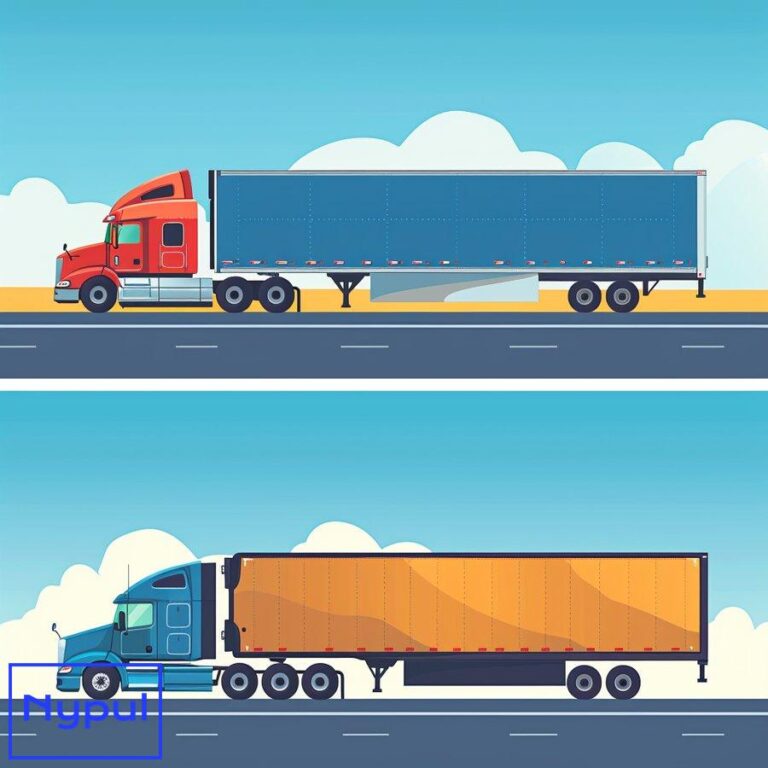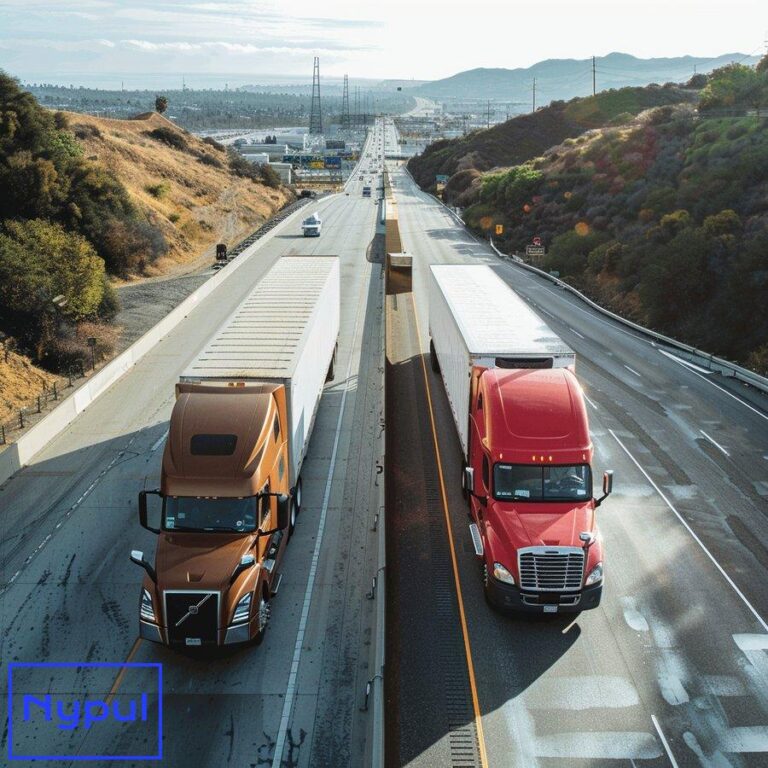What Does Drayage Mean
What is drayage and where did the term originate?
Drayage refers to the transportation of goods over a short distance, typically as part of a longer shipping process. This service is essential in the logistics industry, facilitating the movement of containers from ports to warehouses, rail yards, and other distribution points. The term “drayage” originates from the word “dray,” which describes a low, flat cart used for transporting heavy loads. Historically, drays were horse-drawn vehicles that moved goods from ships to nearby storage facilities.
Understanding Drayage
-
Definition: Drayage is a short-distance transport service, often involving the movement of shipping containers.
-
Origin: The term derives from “dray,” a type of cart used for carrying heavy loads, emphasizing the service’s historical roots in transporting goods.
-
Context: Drayage is a critical component of the supply chain, linking various modes of transportation, including maritime, rail, and trucking.
How does drayage fit into the broader logistics and supply chain?

Drayage plays a vital role in the logistics and supply chain ecosystem. It serves as a bridge between different transportation modes, ensuring that goods are efficiently moved from one point to another.
Integration in Logistics
-
Intermodal Transportation: Drayage is a key part of intermodal transportation, where goods are transferred between different modes, such as shipping containers moving from a vessel to a truck or rail.
-
Supply Chain Efficiency: Effective drayage operations enhance supply chain efficiency by reducing transit times and minimizing delays. This efficiency is crucial for businesses that rely on timely deliveries to meet customer demands.
-
Cost Management: Drayage services can impact overall logistics costs. Efficient drayage operations help reduce transportation expenses, which is vital for maintaining competitive pricing in the market.
Table: Drayage’s Role in the Supply Chain
| Component | Description |
|---|---|
| Transportation Mode | Connects maritime, rail, and trucking services |
| Efficiency | Reduces transit times and minimizes delays |
| Cost Impact | Influences overall logistics expenses |
What are the different types of drayage services?

![]()
Various types of drayage services cater to different needs within the logistics industry. Understanding these types helps shippers choose the right service for their requirements.
Types of Drayage Services
-
Port Drayage: Involves transporting containers between ports and nearby locations, such as warehouses or distribution centers. This type is common for ocean freight.
-
Rail Drayage: Refers to the movement of containers between rail terminals and other locations. Rail drayage is essential for intermodal transport, linking rail and truck services.
-
Intermodal Drayage: Involves transferring containers between different transportation modes, such as from ship to truck or rail. This service is crucial for seamless supply chain operations.
-
Expedited Drayage: A premium service that prioritizes speed, ensuring that goods are moved quickly to meet urgent delivery needs. This type is often used in time-sensitive situations.
-
Hazardous Material Drayage: Specialized transportation for hazardous materials, requiring compliance with safety regulations and additional handling procedures.
Table: Types of Drayage Services
| Type | Description |
|---|---|
| Port Drayage | Transport between ports and nearby locations |
| Rail Drayage | Movement between rail terminals and other sites |
| Intermodal Drayage | Transfers between different transportation modes |
| Expedited Drayage | Fast-tracked service for urgent deliveries |
| Hazardous Material | Specialized transport for hazardous goods |
How do drayage operations work in practice?
Drayage operations involve a series of coordinated steps to ensure the efficient movement of goods. Understanding these processes helps shippers navigate the complexities of drayage.
Operational Steps

-
Container Pickup: The drayage provider picks up the container from the port or rail terminal. This step involves verifying documentation and ensuring that the container is ready for transport.
-
Transportation: The container is transported to the designated location, such as a warehouse or distribution center. This step requires careful planning to optimize routes and minimize delays.
-
Delivery and Unloading: Upon arrival, the container is unloaded, and the goods are delivered to the final destination. This step may involve additional handling or storage, depending on the shipper’s needs.
-
Documentation and Billing: After the delivery, the drayage provider processes the necessary documentation, including bills of lading and invoices. Accurate billing is essential for maintaining financial records and ensuring timely payments.
Challenges in Drayage Operations
-
Congestion: Ports and terminals often experience congestion, leading to delays in pickup and delivery.
-
Regulatory Compliance: Drayage providers must comply with various regulations, including safety standards and environmental requirements.
-
Coordination: Effective communication and coordination among shippers, carriers, and terminals are essential for smooth operations.
Why is drayage important for global trade?
Drayage is a fundamental component of global trade, facilitating the movement of goods across borders and ensuring that products reach their destinations efficiently.
Significance in Global Trade


-
Supply Chain Connectivity: Drayage connects various transportation modes, enabling seamless movement of goods from manufacturers to consumers worldwide.
-
Market Access: Efficient drayage services allow businesses to access international markets, expanding their reach and increasing competitiveness.
-
Timeliness: In global trade, timely deliveries are crucial. Drayage operations help ensure that goods are transported quickly, meeting customer expectations and maintaining supply chain integrity.
Impact on Economic Growth
-
Job Creation: The drayage industry supports numerous jobs in transportation, logistics, and related sectors, contributing to overall economic growth.
-
Trade Facilitation: Drayage services play a vital role in facilitating international trade, ensuring that goods move smoothly across borders and supporting global commerce.
What challenges does the drayage industry face?
The drayage industry faces several challenges that can impact operations and overall efficiency. Understanding these challenges is essential for stakeholders looking to navigate the complexities of drayage.

Key Challenges
-
Congestion and Delays: Ports and terminals often experience congestion, leading to delays in pickup and delivery. This congestion can result from increased shipping volumes, labor shortages, or infrastructure limitations.
-
Regulatory Compliance: Drayage providers must navigate a complex web of regulations, including safety standards, environmental requirements, and customs regulations. Compliance can be time-consuming and costly.
-
Cost Pressures: Rising fuel prices and increased operational costs can strain drayage providers, impacting their profitability and ability to offer competitive rates.
-
Labor Shortages: The transportation industry faces a shortage of qualified drivers, which can lead to delays and increased costs for drayage operations.
Table: Challenges in the Drayage Industry
| Challenge | Description |
|---|---|
| Congestion | Delays due to high shipping volumes |
| Regulatory Compliance | Navigating complex regulations and standards |
| Cost Pressures | Rising operational costs and fuel prices |
| Labor Shortages | Shortage of qualified drivers |
How is technology transforming drayage?
Technology is revolutionizing the drayage industry, enhancing efficiency, visibility, and overall performance. The adoption of innovative solutions is helping stakeholders address challenges and improve operations.
![]()
Technological Advancements
-
Real-Time Tracking: GPS and tracking technologies provide real-time visibility into the location and status of shipments, enabling shippers to monitor progress and address potential delays proactively.
-
Automation: Automation of processes, such as documentation and scheduling, reduces the risk of human error and streamlines operations, leading to faster and more efficient drayage services.
-
Data Analytics: Advanced analytics tools allow shippers and carriers to analyze historical data, identify trends, and make data-driven decisions to optimize drayage operations.
-
Collaboration Platforms: Digital platforms facilitate communication and collaboration among shippers, carriers, and terminals, improving coordination and reducing the risk of delays.
Impact on Efficiency and Cost Reduction
-
Improved Planning: Technology enables better planning and route optimization, reducing transit times and minimizing operational costs.
-
Enhanced Customer Service: Real-time visibility and communication improve customer service, allowing shippers to provide accurate delivery estimates and updates.
-
Sustainability: Technology can also contribute to sustainability efforts by optimizing routes and reducing fuel consumption, aligning with environmental goals.
Table: Technology’s Impact on Drayage
| Technology | Benefit |
|---|---|
| Real-Time Tracking | Enhanced visibility and proactive issue resolution |
| Automation | Streamlined operations and reduced errors |
| Data Analytics | Data-driven decision-making and optimization |
| Collaboration Platforms | Improved communication and coordination |
In summary, drayage is an essential component of the logistics and supply chain landscape, facilitating the movement of goods over short distances. Understanding its significance, challenges, and the impact of technology is crucial for stakeholders looking to navigate this vital industry effectively.






